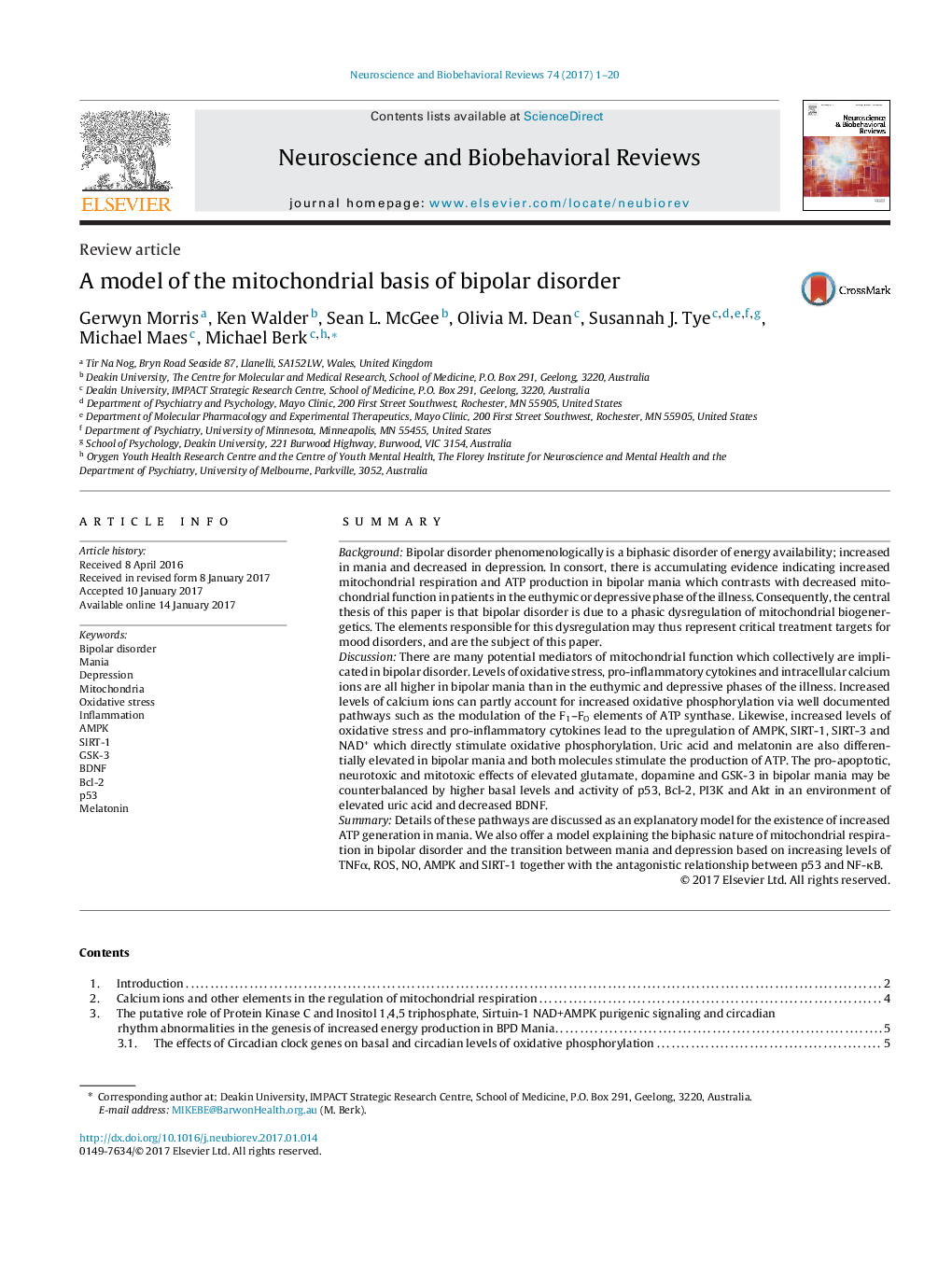| کد مقاله | کد نشریه | سال انتشار | مقاله انگلیسی | نسخه تمام متن |
|---|---|---|---|---|
| 5043695 | 1370591 | 2017 | 20 صفحه PDF | دانلود رایگان |
- Bipolar disorder phenomenologically is a biphasic disorder of energy; increased in mania and decreased in depression.
- There is evidence of increased mitochondrial respiration and ATP production in bipolar mania contrasting with decreased mitochondrial function in patients in the euthymic or depressive phase of the illness.
- Consequently, the central thesis of this paper is that bipolar disorder is due to a phasic dysregulation of mitochondrial biogenergetics.
BackgroundBipolar disorder phenomenologically is a biphasic disorder of energy availability; increased in mania and decreased in depression. In consort, there is accumulating evidence indicating increased mitochondrial respiration and ATP production in bipolar mania which contrasts with decreased mitochondrial function in patients in the euthymic or depressive phase of the illness. Consequently, the central thesis of this paper is that bipolar disorder is due to a phasic dysregulation of mitochondrial biogenergetics. The elements responsible for this dysregulation may thus represent critical treatment targets for mood disorders, and are the subject of this paper.DiscussionThere are many potential mediators of mitochondrial function which collectively are implicated in bipolar disorder. Levels of oxidative stress, pro-inflammatory cytokines and intracellular calcium ions are all higher in bipolar mania than in the euthymic and depressive phases of the illness. Increased levels of calcium ions can partly account for increased oxidative phosphorylation via well documented pathways such as the modulation of the F1-FO elements of ATP synthase. Likewise, increased levels of oxidative stress and pro-inflammatory cytokines lead to the upregulation of AMPK, SIRT-1, SIRT-3 and NAD+ which directly stimulate oxidative phosphorylation. Uric acid and melatonin are also differentially elevated in bipolar mania and both molecules stimulate the production of ATP. The pro-apoptotic, neurotoxic and mitotoxic effects of elevated glutamate, dopamine and GSK-3 in bipolar mania may be counterbalanced by higher basal levels and activity of p53, Bcl-2, PI3K and Akt in an environment of elevated uric acid and decreased BDNF.SummaryDetails of these pathways are discussed as an explanatory model for the existence of increased ATP generation in mania. We also offer a model explaining the biphasic nature of mitochondrial respiration in bipolar disorder and the transition between mania and depression based on increasing levels of TNFα, ROS, NO, AMPK and SIRT-1 together with the antagonistic relationship between p53 and NF-κB.
Journal: Neuroscience & Biobehavioral Reviews - Volume 74, Part A, March 2017, Pages 1-20
